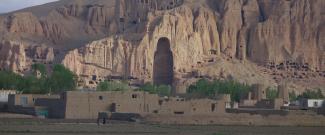
The program in Ancient Near Eastern History offers an interdisciplinary approach to the history of the Near East from the emergence of cities in Mesopotamia to the rise of Islam. In addition to a broad-based familiarity with the historiographies of the various regions and periods, students obtain training in the archaeological and philological methods taught within the department relevant to the writing of history. Students specialize in one of the traditional geographical-chronological domains of the Ancient Near East: Mesopotamia, Egypt, Anatolia, Persia, or Late Antiquity. The program, moreover, emphasizes the value of a comparative historical perspective, requiring students to become acquainted with current research on the Classical Mediterranean and other premodern societies. Its aim is to train scholars who not only produce groundbreaking research within their own domains, but also can teach a wide range of premodern histories competently and compellingly, from a cross-chronological, global perspective.
Under ordinary circumstances, the following courses are required in the first three years of the program: twenty-seven courses, including at least two courses of the Ancient Near Eastern history sequence, four Ancient Near Eastern history research seminars, two courses in archaeology, two courses in the history or archaeology of the Classical Mediterranean, and two additional courses in any domain of history beyond the Near East or in a relevant ancillary discipline. Students must attain proficiency in at least two Ancient Near Eastern languages. Further coursework should reflect a coherent, disciplined research agenda within a particular domain. Students are required to complete their qualifying exams before the end of the autumn quarter of their fourth year. Typically, these are three written exams.


